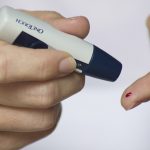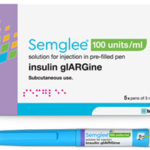Automated Insulin Delivery System, Not an Artificial Pancreas – Anne Louise Peters (MD)

This transcript has been edited for clarity.
I’d like to clear up the confusion about whether or not there is such a thing as an artificial pancreas. First, we know that we have pancreases and beta-cell transplants that work. An artificial pancreas is different, and it’s actually an old term for what we now call automated insulin delivery (AID). Those systems are not an artificial pancreas; they are ways to deliver insulin to patients with type 1 and type 2 diabetes.
We have, within the category of AID, the hybrid closed-loop systems. These are systems like the Tandem Control IQ, the Omnipod 5, and the Medtronic 780 G that give insulin continuously on the basis of values obtained from a sensor. These systems are really good at basal insulin because when somebody is not eating, or if it is overnight, they can keep glucose levels really flat.
These aren’t fully closed-loop systems because the individual still has to interact with the system and give doses for meals and then adjust doses for exercise. This is often really tough for patients because they need to give a dose in advance of the meal, and they have to figure out how many carbohydrates they’re eating. If they’re going to exercise, they have to reduce the insulin that they’re given 1-2 hours before exercise.
This makes spontaneity in life difficult, and if done wrong, people can end up being either hypo- or hyperglycemic. It would be really great to have a system that was a fully closed-loop system that didn’t require that someone to do all of these things.
A couple of weeks ago, I went to a National Institutes of Health conference on automated insulin delivery systems, and for 2 days, I sat and listened to the most genius people in this field. They’re amazing human beings who are really dedicated. I was hoping for the answer, for the magic, for the reason why we can’t do a fully closed-loop system and what we’re going to do about it.
What I learned is that the limit — and I guess I should have realized this — is that we’re giving insulin subcutaneously. Subcutaneously delivered insulin has a problem, which is that you give it, it works however long it takes it to work, but then, it takes 4-6 hours to wear off.
Whatever algorithms you use for giving insulin as glucose levels are going up, whatever wristband you can have someone wear to see if they’re eating or not eating, and for anything you do to help reduce the postprandial rise, you then have to figure that there is no brake.
Basically, you can’t get rid of the insulin once it’s been given, and glucose levels will fall if the insulin is stacked too much in advance or with the increase of the glucose levels with the meal. Somebody said, which I think is really apt, that it’s like an engineer trying to design a car with only a gas pedal and no brake.
I think that’s what makes all of this very hard. We put much of the onus on the system user to do many things right. The system does things for the patient, but it isn’t enough. It is not a fully closed-loop system.
Anne Peters, M.D., is a Professor of Medicine at the Keck School of Medicine of USC and Director of the USC Clinical Diabetes Programs.





